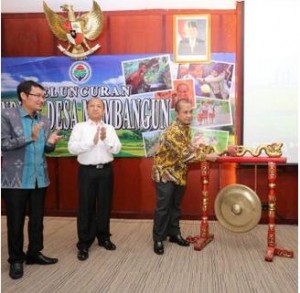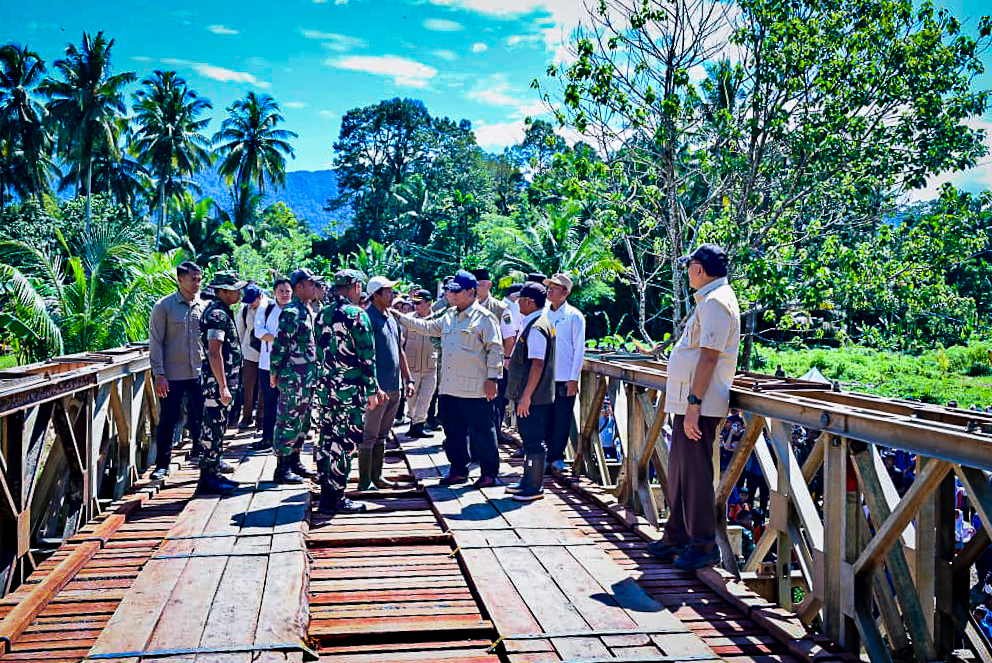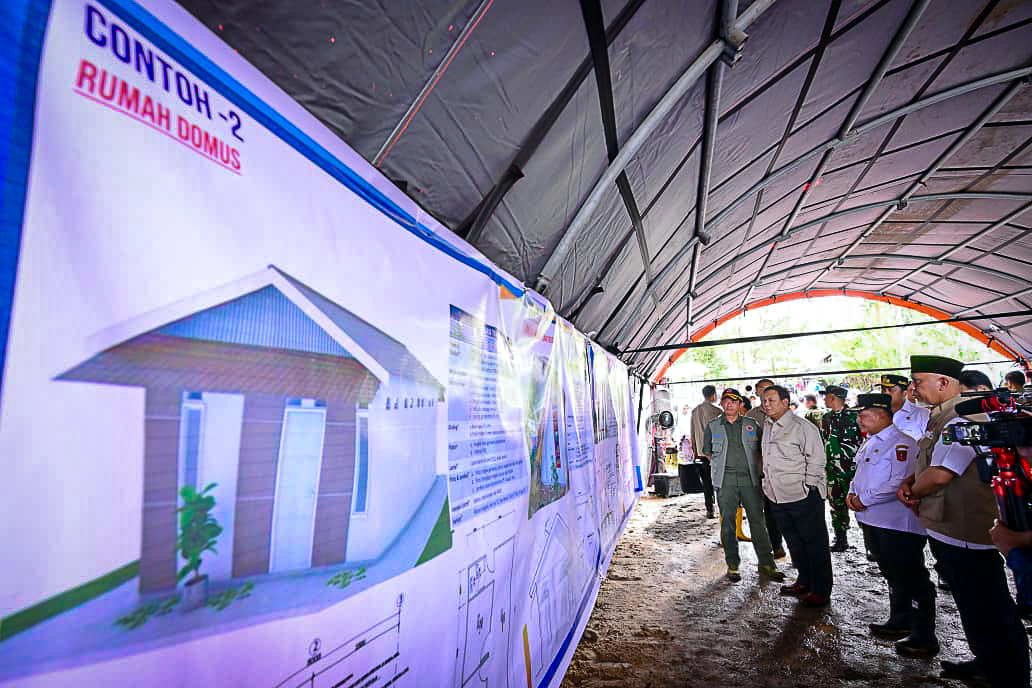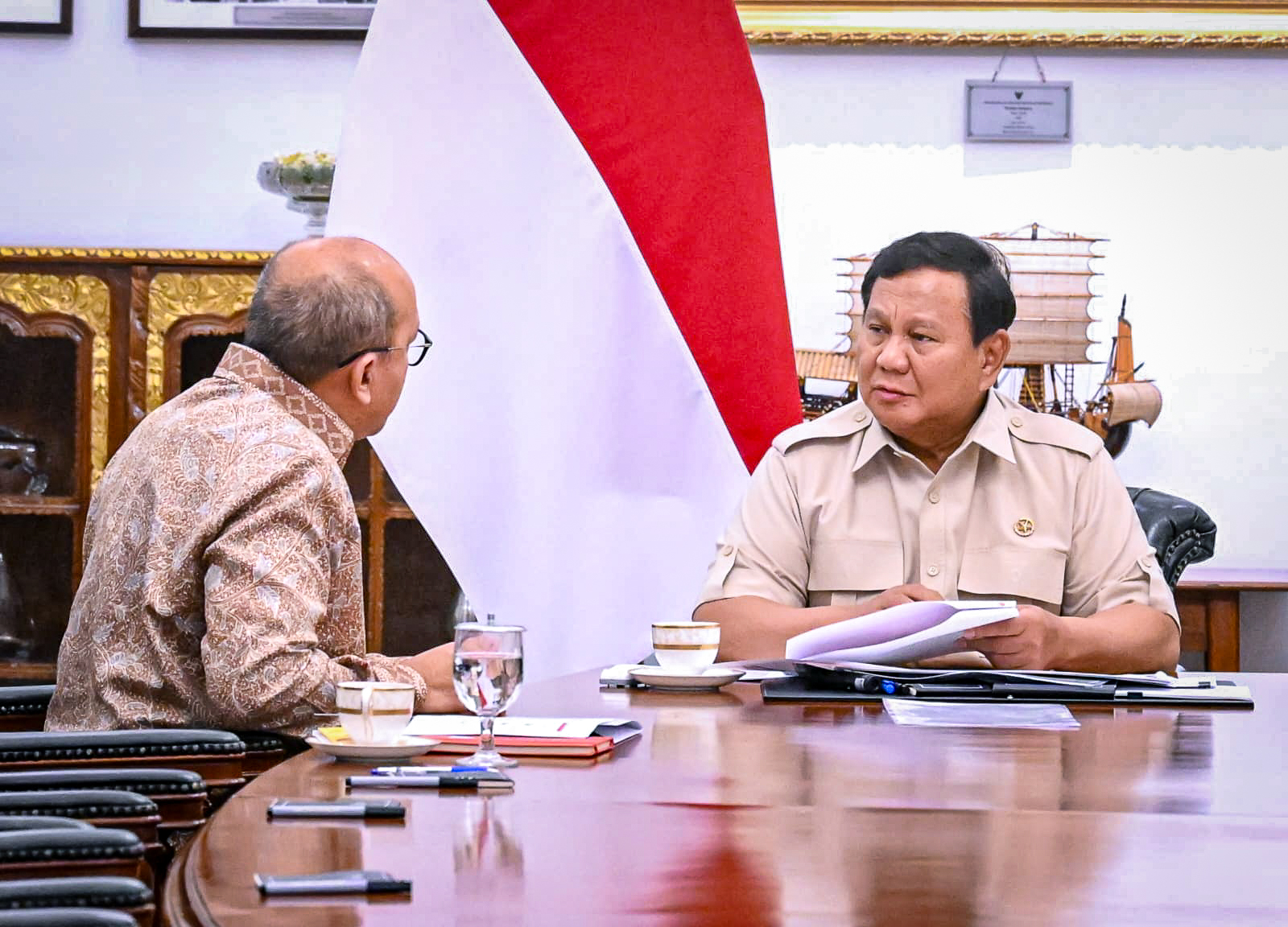Ministry of Villages, Underdeveloped Regions and Transmigration Launches Developing Villages Index

The Minister of Villages, underdeveloped Regions and Transmigration Marwan Jafar launched Developing Villages Index on Monday (19/10), in Jakarta
In order to reduce the number or underdeveloped villages and to boost the number of independent villages, the Ministry of Villages, Underdeveloped Regions and Transmigration launched Developing Villages Index (IDM). The launching was led by the Minister of Villages, Underdeveloped Regions and Transmigration Marwan Jafar, at the Operational Room of the Ministry of Villages, Underdeveloped Regions and Transmigration, located at Jalan Taman Makam Pahlawan Kalibata, Jakarta, on Monday (19/10).
Minister Marwan Jafar asserted that the IDM is launched to lay an initiative and to strengthen the peoples capacity as a fundamental basis in the village development and empowerment process. The IDM is expected to strengthen the accomplishment of the National Medium Term Development Plan (RPJMN) for 2015-2019.
The IDM is more comprehensive than Villages Development Index (IPD) because the IDM puts forward social, economy and ecological powers approaches, without removing political, cultural, historical, and local wisdom powers, said Minister Marwan in Kalibata.
Once the index is used as a reference to perform development affirmation, integration and synergy, according to Marwan, a prosperous, just, and independent condition of the people in the villages shall be able to be materialized.
It could be a reference for the Government to reduce the number of underdeveloped villages and to boost the number of independent villages in Indonesia, the Minister said.
According to Marwan, up to this moment, there are 5,000 underdeveloped villages. The Minister hopes the number of independent villages in Indonesia in 2019 will increase to 2,000.
Marwan added that people empowerment has become the main concentration, a strategic starting point to create a qualified participation and to improve knowledge and skills. Thus, empowered society is an important asset in supporting the spirit of Village Law that places the village as the subject of the development.
By becoming the subject of development, the village will become an entity which potentially can juxtapose the role of the State in developing the nations welfare, prosperity, and sovereignty both in national and international perspectives, Minister Marwan said.
The Poverty
Marwan Jafar mentioned the poverty problem that is still the main problem of villages. From the data of 1980s, about 78 percent of Indonesian population live in the villages. However, currently, the number of people who live in the city and the village is almost equal. The city population reaches 49.8 percent and the village population reduced to 50.2 percent as compared to the last 35 years.
If the trend of urbanization carries on, in 2025, 65 percent of Indonesian population is estimated will live in the city, he said.
According to Marwan, the imbalance of village and city population could be seen from the poverty depth index in village and city. In 2014, the percentage of villagers living under the poverty line is 13.8 percent. Meanwhile, people who lives under the poverty line in the city is 8.2 percent.
If it is further examined, Marwan added, the poverty rate in the villages is deeper and worse than in the city. The poverty depth index in the city reaches 1.25 whereas it is 2.24 in the village.
The Minister mentioned that the higher the index value is, the harder the underprivileged could escape the poverty line. Furthermore, the poverty severity index in the city is 0.31 and 0.56 in the village. The higher the index value is, the higher spending imbalance among the underprivileged,Marwan said. (Human Kemendesa/ES) (RAS/MMD/YM/Naster)








